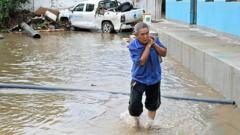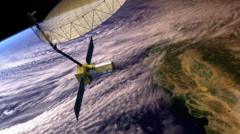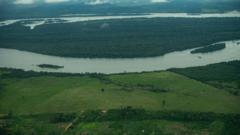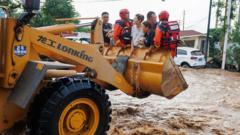In a groundbreaking initiative set to unfold during the upcoming climbing season, Nepali Sherpas, the skilled guides of Mount Everest, will soon receive support from drones designed to transport heavy loads typically carried by these mountaineers. As the climbing season approaches, expedition companies plan to trial these advanced drones capable of carrying as much as 35 pounds up to challenging altitudes, expediting the transportation of supplies and ensuring the safety of the Sherpas.
Drones to Support Sherpas in Everest Expeditions: A New Era of Climbing

Drones to Support Sherpas in Everest Expeditions: A New Era of Climbing
As drone technology advances, Sherpas on Mount Everest may finally get assistance with their heavy loads, enhancing safety and efficiency.
Currently, it can take Sherpas up to seven hours to move vital equipment from the base camp to Camp I, but the newly deployed drones promise to complete the journey in just 15 minutes. This enhancement may significantly lower the risk of accidents that Sherpas face, especially as changing climate conditions and accelerated snowmelt increase the dangers along the perilous climbing routes. Tshering Sherpa, a notable advocate for the initiative, remarked, “Sherpas bear enormous risks. The drone makes their task safer, faster, and more efficient,” emphasizing the lifesaving potential this technology may hold.
For over a year, testing has been underway with two drones provided by a Chinese manufacturer. The pilot test during this climbing season is deemed crucial in showcasing the advantages of drone technology to expedition companies, which could lead to further investment in more drones aimed at transporting climbing gear and essential supplies like oxygen tanks. Although the initial cost for procuring the drones might be steep, supporters believe that the long-term operational savings will justify the investment, bringing about a revolution in how expeditions operate on the highest peaks of the world.
Implementing such technology could alleviate some of the burdens faced by Sherpas, promising a safer environment on Mount Everest and a new chapter in the history of mountain climbing.
For over a year, testing has been underway with two drones provided by a Chinese manufacturer. The pilot test during this climbing season is deemed crucial in showcasing the advantages of drone technology to expedition companies, which could lead to further investment in more drones aimed at transporting climbing gear and essential supplies like oxygen tanks. Although the initial cost for procuring the drones might be steep, supporters believe that the long-term operational savings will justify the investment, bringing about a revolution in how expeditions operate on the highest peaks of the world.
Implementing such technology could alleviate some of the burdens faced by Sherpas, promising a safer environment on Mount Everest and a new chapter in the history of mountain climbing.





















